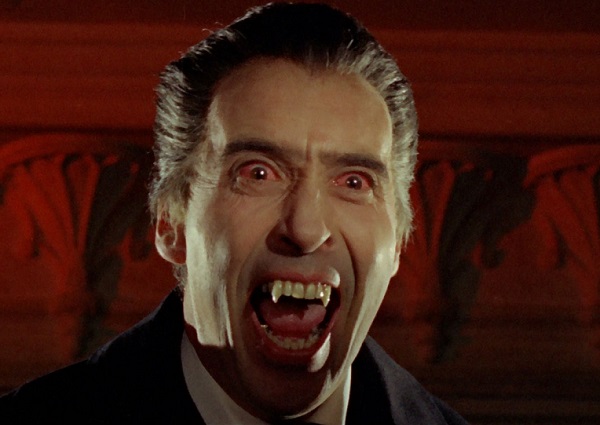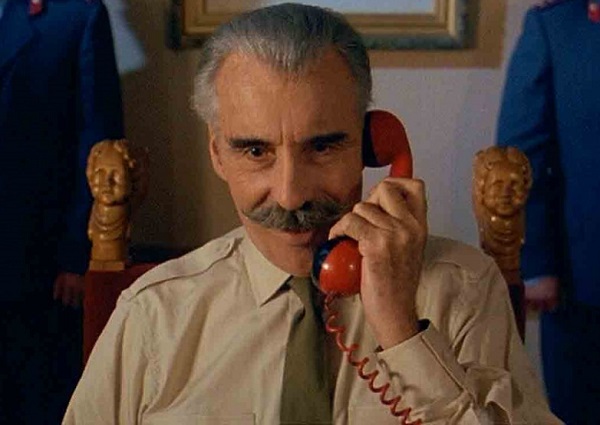Longevity and proclivity in Hollywood are impressive on their own, but embodying an incredible variety of iconic characters along the way is perhaps even more special. Regardless of whether you score by length of career, number of credits, work done in any particular role or overall versatility, though, Sir Christopher Lee comes out very well.
Lee passed away at the age of 93 Sunday morning, with his wife only releasing the news Thursday, and his passing has sparked remarkable tributes from across the globe. There are so many dimensions of Lee’s career that deserve discussion, and perhaps that’s what particularly stands out about him; he did so much, and did it so well.
Entire books could be written about just the iconic villains portrayed by Lee, and what’s especially notable there is that many of them were exceptionally different.
From the way he used his 6-foot-5 frame and sheer power to inspire terror as Frankenstein’s monster (in 1957’s The Curse Of Frankenstein, which set him up for future work with Hammer Film Productions, and his friend and frequent on-screen nemesis Peter Cushing) or as the titular character in 1959’s The Mummy, to the cleverness and ruthlessness he brought to the role of Francisco Scaramanga, the would-be assassin of James Bond in 1974’s The Man With The Golden Gun (interestingly enough, he was a cousin of Bond creator Ian Fleming), to the aristocratic bearing and predatory appeal he illustrated in 1958’s Dracula and a variety of sequels to it (he played the Count 10 times in all, and arguably redefined the character), to the sinister swordplay of the Comte de Rochefort in 1973’s The Three Musketeers and its sequels, to the persuasive and charming cult leader Lord Summerisle in 1973’s The Wicker Man, Lee’s villains never felt paint-by-numbers.
Whether he was playing the Devil himself (1963’s Katarsis), Rasputin (1966’s Rasputin: The Mad Monk) or Fu Manchu (five films in the 1960s), Lee managed to both bring famed characters to life and add his own original touches without making his performances feel the same.
That uniqueness for each character continued even late in his career, where he combined wits, power and treachery as Saruman in the Lord of the Rings (2001-2003) and The Hobbit (2012-2014) films and delivered a charismatic but deadly performance as Count Dooku in Star Wars: Attack of the Clones (2002) and Star Wars: Revenge Of The Sith (2005). Even in his eighties and nineties, Lee still presented an incredibly intimidating force to be feared through both his physicality and his carefully crafted tones of menace.
For a case in point, consider the Fellowship of the Ring scene where Saruman reveals his true allegiance and duels with Ian McKellen’s Gandalf:
That scene, and many of his others throughout the Lord of the Rings movies, really illustrates how perfectly Lee portrayed the character. Charismatic but menacing, wise but scheming, cunning and deceptive, a man of both words and action, and someone who once was a key good figure, but willing to abandon that to launch an utterly ruthless campaign for power, Lee’s Saruman illustrates the contrasts J.R.R. Tolkien wrote into the character. His work as Saruman also shows the incredible preparation he put into his literary roles, embodying each character with recognizable traits from the books while still creating something unique.
Unlike many other actors, it never felt like Lee was merely playing himself. He threw himself into so many different roles, giving them distinction and nuance and really bringing literary characters like Dracula, Rochefort and Saruman to life for audiences across the globe. (Interestingly enough, Lee’s age may have given him added insight into that latter role; he was the only Lord of the Rings cast member who actually met author J.R.R. Tolkien before Tolkien’s 1973 death.)
While Lee’s performances as the villains of various pieces are what he’s most remembered for (he titled his 1977 autobiography “Tall, Dark and Gruesome,” his incredible 278 IMDB acting credits include plenty of more positive memorable roles as well. He wound up in the world of Sherlock Holmes numerous times, portraying Sir Henry Baskerville in 1959’s The Hound of the Baskervilles, Holmes himself in 1962’s The Valley of Fear (plus two later TV movies), and Sherlock’s brother Mycroft in 1970’s The Private Life of Sherlock Holmes.
He got to play the hero in a horror film for once in 1968’s The Devil Rides Out, bringing mystical detective Nicholas, Duc de Richleau to life and thwarting a devil-worshipping cult. He was Willy Wonka’s dentist father in Tim Burton’s 2005 adaptation of Charlie and the Chocolate Factory, and Terry Pratchett’s famed Death in the TV adaptations of Discworld books Wyrd Sisters and Soul Music. He was even an effective mad scientist as Dr. Catheter in 1990’s Gremlins 2: The New Batch, and he showed off his comedic chops by hosting Saturday Night Live in 1978 and portraying a Russian commandant in 1994’s Police Academy: Mission to Moscow.
Lee could do historical work, too; what he called “the most important film I made” was his performance as Muhammad Ali Jinnah, the founder of Pakistan, in 1998’s Jinnah.
It’s also notable that Lee’s talents went beyond just acting. He served in Britain’s Royal Air Force and Special Forces during the Second World War, but never talked much about it beyond saying the experience meant by 23, “already I had seen enough horror to last me a lifetime.” He was an expert fencer who did many of his own stunts, especially those involving swashbuckling (it’s thought he appeared in more on-screen swordfights than anyone), and was made an honourary member of three stuntman unions. He was even skilled enough at golf to become the first actor inducted into The Honourable Company of Edinburgh Golfers.
https://youtu.be/ns0mw10rSGo
Perhaps most interestingly, Lee pursued music throughout his life, appearing in a variety of operas, singing “Name Your Poison” in 1983’s “Return of Captain Invincible” and releasing a symphonic metal concept album based on Charlemagne in 2010. (It’s actually quite good!)
Lee put out a follow-up album in 2013, featuring Tony Iommi of Black Sabbath fame, and his single “Jingle Hell” hit No. 22 on the Billboard Hot 100, making him the oldest living artist (at 91) to ever hit that chart.
For many people, that would be their most notable accomplishment. With Lee, it was barely a footnote, which illustrates just how incredibly accomplished he was. He’ll be missed, and he’ll be long-remembered.

